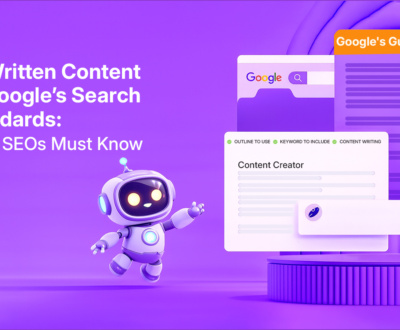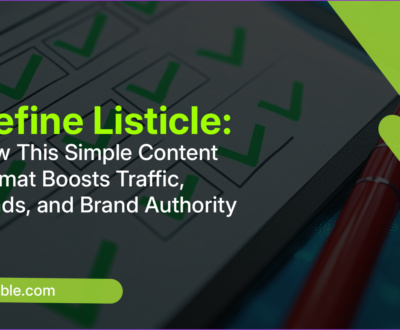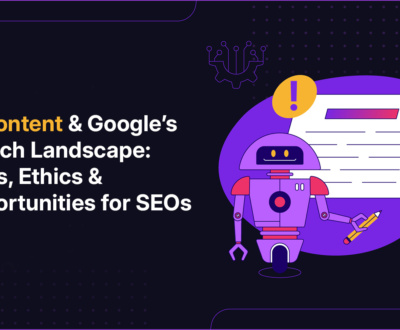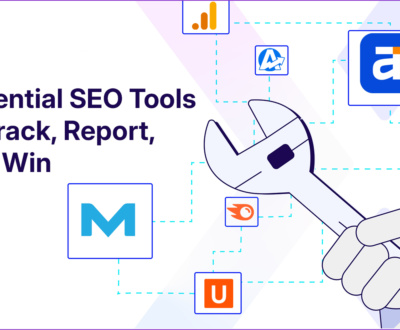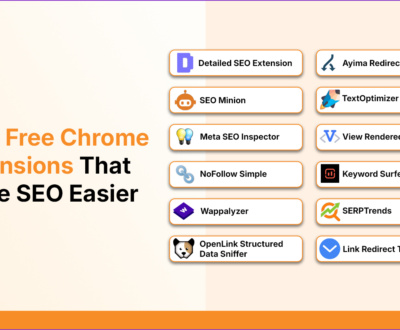To be honest, PPC may feel like shooting bullets in the dark, but once you find your light on the right metrics, boom, you have hit the jackpot.
If your obsession remains with clicks and the impression that it is time to wake up to reality.
Ask yourself, are those clicks converting? And does your ad spend give you a real return, or just wasting your budget faster?
With this highly volatile digital space, the PPC game has become smarter, faster, and more data-driven than ever.
You will see the results only when you track what matters in any kind of campaign, whether Performance Max, Discovery Ads, or more.
So here are the 10 most important PPC metrics that can either take your campaign to the sky or bury it in the earth. Don’t miss any of it-
10 PPC KPIs to Maximize ROI and Crush Your Ad Goals

1. Cost-Per-Acquisition (CPA): How Much Are You Paying to Make a New Friend (Who Actually Buys Stuff)?
CPA helps you find how much you are spending to get a customer.
It’s not about a click or a lead, you will find a real, money-spending customer.
Formula:
CPA = Total Ad Spend / Number of Acquisitions
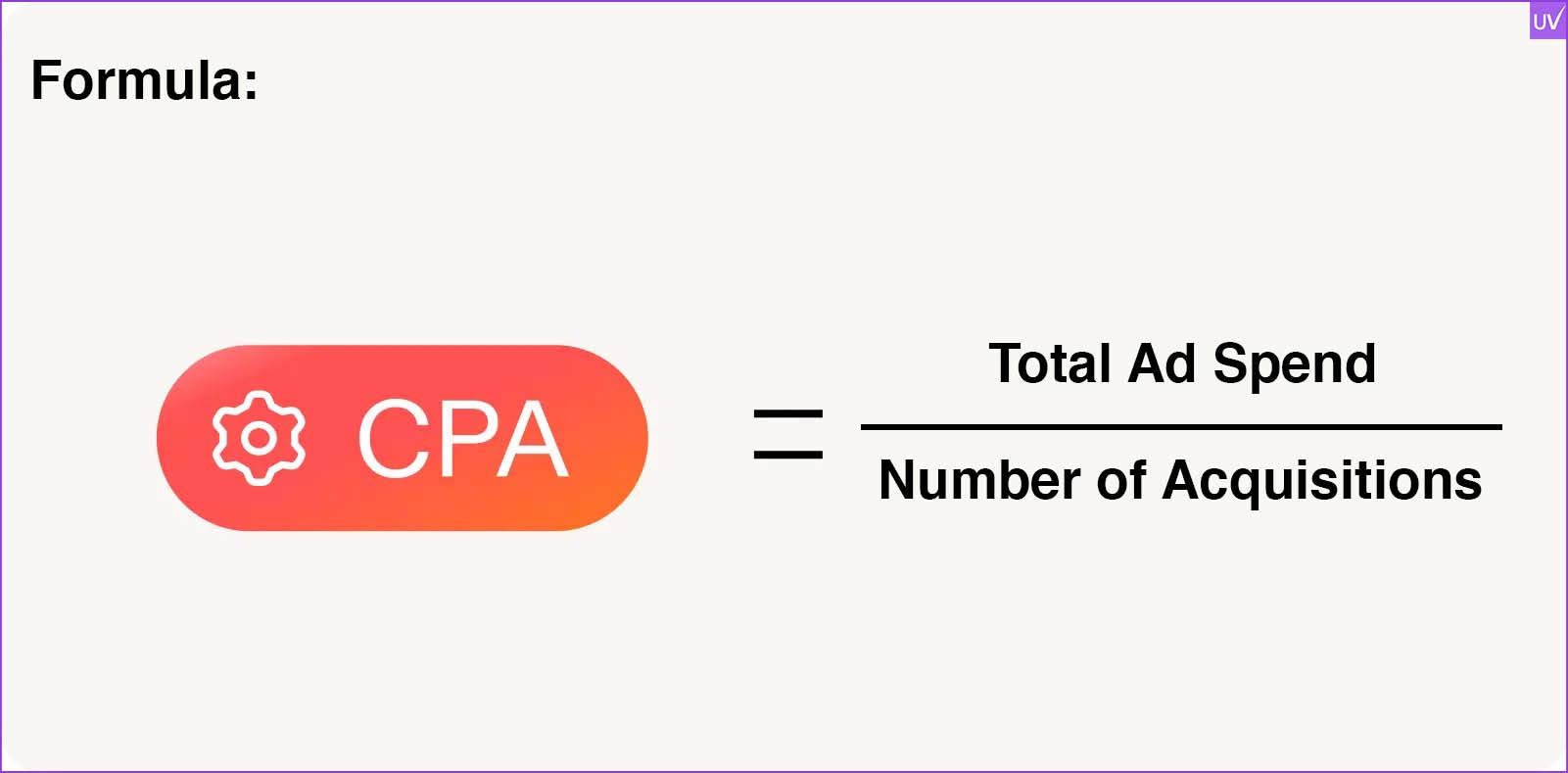
Why It Matters:
What do you think about spending ₹1,000 to sell a ₹250 product? You think it’s stupid, right? Yet, that’s exactly what happens when you forget to monitor CPA.
Let me give you a fact check: The average PPC CPA on Google Search is $48.96, but this can touch the skies in niches like legal or healthcare.
For a law firm PPC agency, CPA can cross $135+. That’s too much.
How to Lower It:
- Do not give importance to fuzz and stop bidding on low-quality keywords.
- Utilize Google’s Performance Max campaigns for conversions.
- Or, maybe it’s time for a serious PPC audit services.
2. Cost Per Lead: Because Not All Leads Are Generated Equal
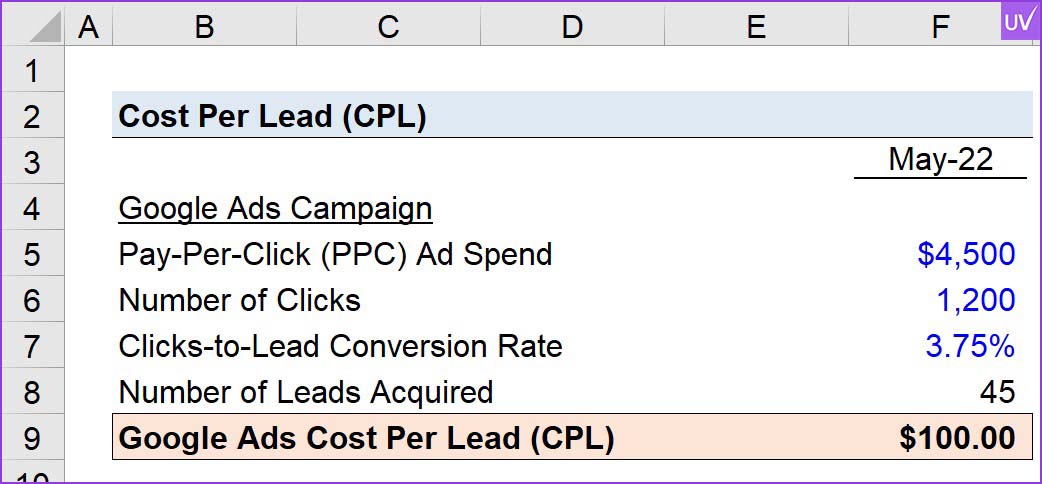
This shows the price tag on every meaningful conversion you have got such as lead form submission, app download, or newsletter signup.
Why You Should Care:
If you think every conversion is worth it, then think twice. If one conversion costs you ₹700 to get a form fill that never converts to a sale, you’re just wasting your cash.
Understand it from this example, suppose a SaaS brand paid ₹500 per whitepaper download, but no leads ever turned into a demo booking. Wasted budget.
You can Fix It:
- By improving conversion tracking (Google Tag Manager, anyone?)
- Leveraging PPC tracking tools to find dead-weight campaigns
- Collaborating with an ecommerce PPC agency that knows how to analyze and use data
3. Impression Share: How Visible Are You, Really?
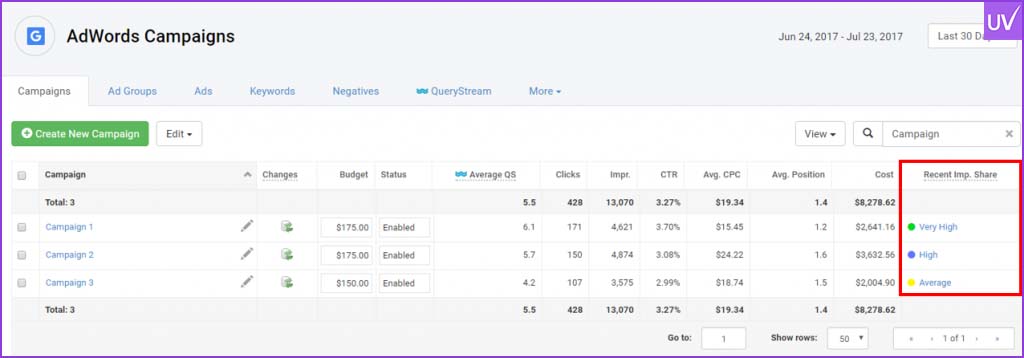
Impression share tells you the percentage of impressions that your ads have received over the total available for your keywords.
Formula:
Impression Share = (Impressions / Total Eligible Impressions) × 100
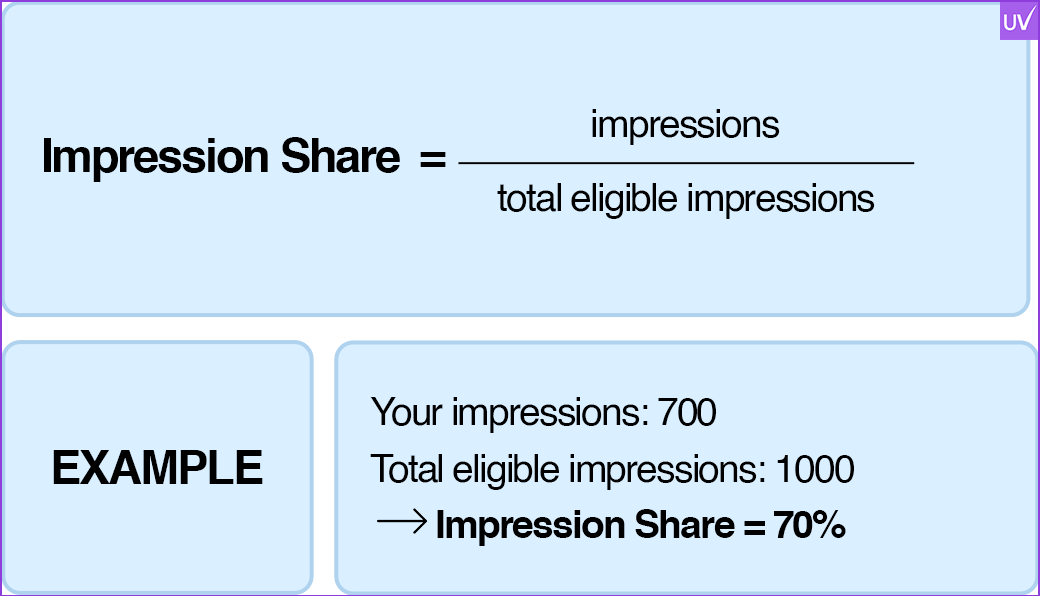
Why It Matters
Tracking impression share is essential; it shows your voice share and helps you see the missed opportunities due to low budgets or poor ad rank.
How to Improve It:
- Increase budgets for profitable campaigns.
- Enhance ad relevance and bidding strategies.
Use Case:
Always watch Impression Share to balance PPC metrics between aggressive scaling and budget protection.
4. Conversion Value (Revenue): Measuring What Really Matters
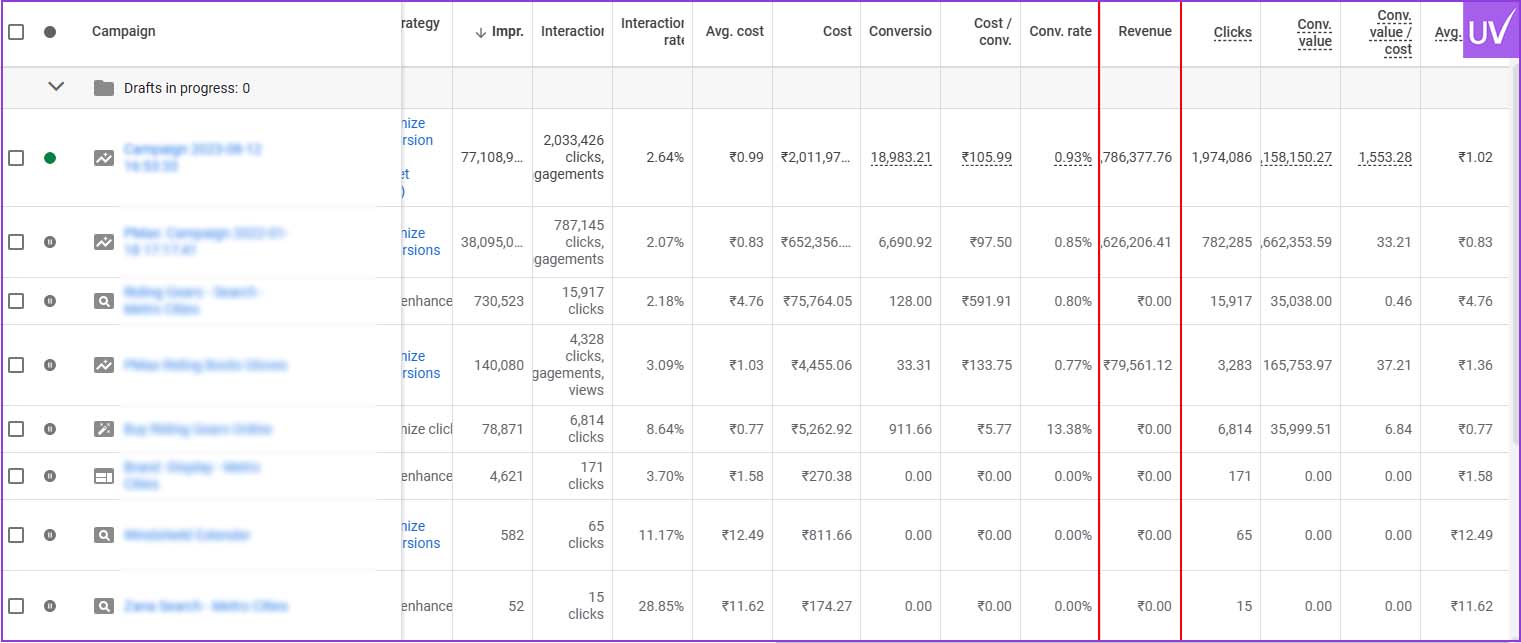
Conversion value, also known as revenue, is what tracks the monetary gains from a PPC campaign.
It helps you find the value generated by your ads to increase sales.
Formula:
Conversion Value = Revenue per Conversion * Number of Conversions
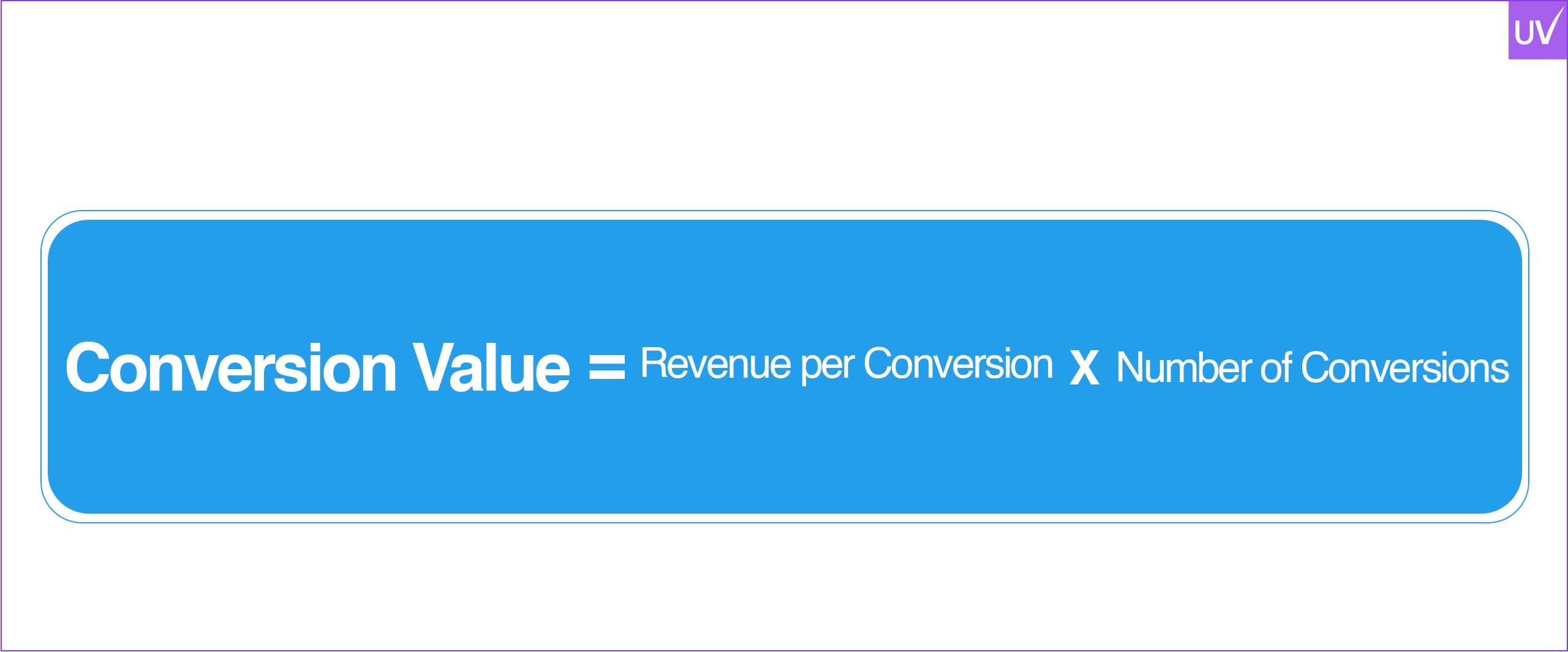
Why It Matters
To find out if you are winning the game of PPC or not.
Suppose your ad spend is $2,000 and you made $8,000 in sales, that’s a clear win.
But if you are not tracking conversion value, you are running towards a blind spot.
This is especially important for ecommerce and lead-gen campaigns connected to revenue goals.
Benchmarks
- The average order value (AOV) can help benchmark conversion value for e-commerce businesses.
- Allot estimated values for leads based on historical data for service businesses.
How to Track It
- Use Google Ads Conversion Tracking to set parameters.
- Integrate your online business or CRM with ad platforms.
5. Quality Score: Google’s Not-So-Secret Popularity Contest

Quality Score is nothing but the grades Google gives your ads on a scale of 1–10 based on relevance, landing page copy and experience, and click-through rate (CTR).
High score = lower costs. Low score = Google side-eyes you.
Your cost-per-click (CPC) can be reduced by 16% only by boosting your Quality Score by just 1 point.
How to Win Google’s Love:
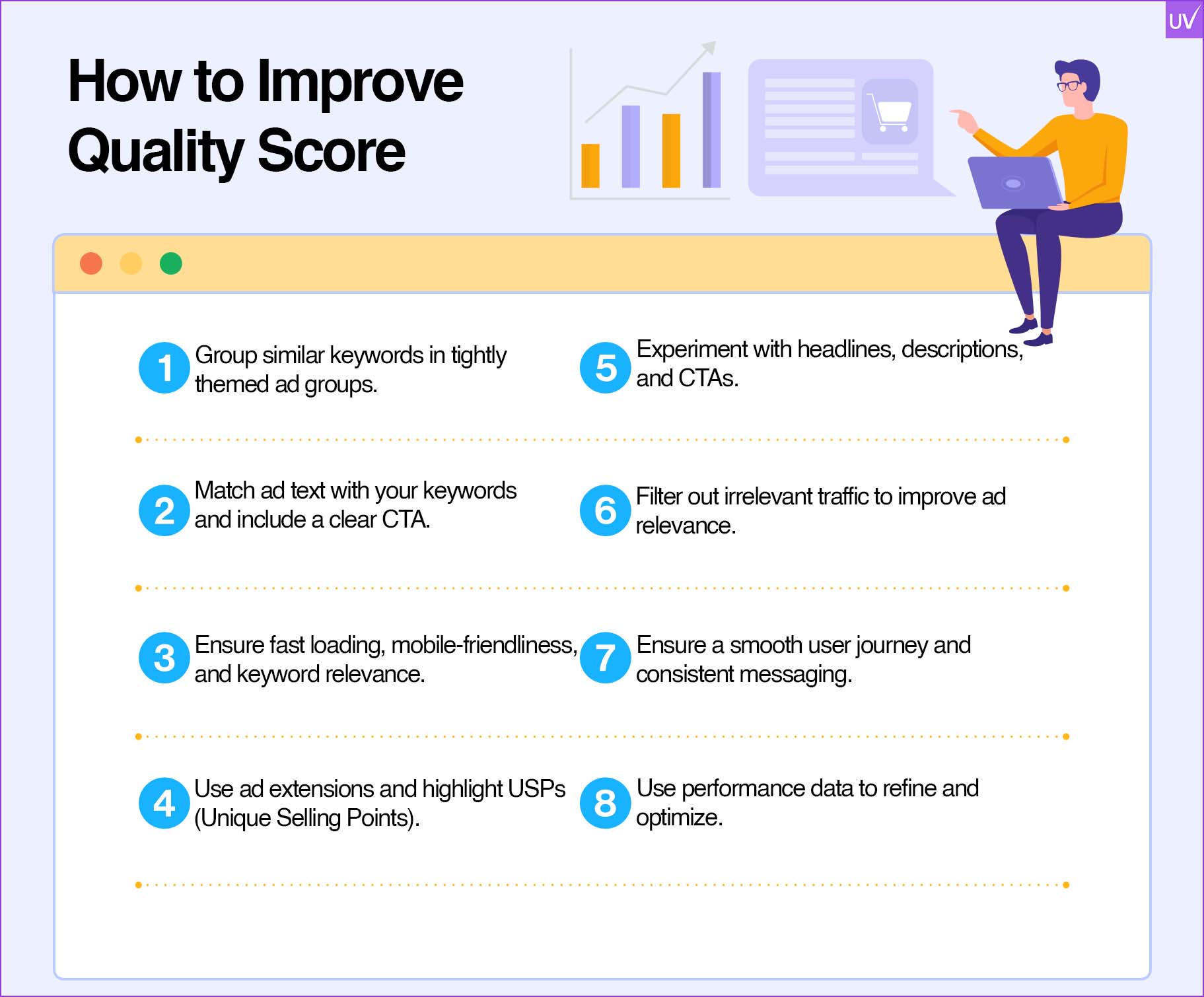
- Make your ads shout relevance (focus on matching keywords).
- Send users to landing pages that deliver what you promised.
- Trim the unnecessary information. No one likes vague, boring ad copy. Be bold, be smart.
Still struggling? Use PPC tools like SEMrush PPC to diagnose what’s dragging your score down.
6. Return on Ad Spend (ROAS): Are You Making Money or Just Making Noise?
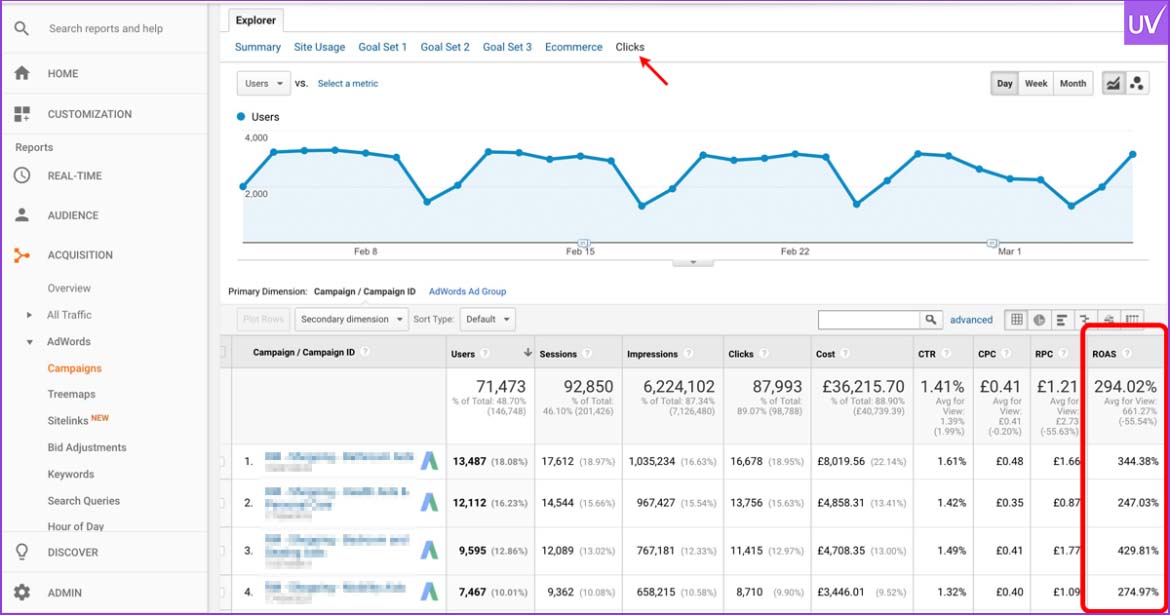
ROAS is also known as the ultimate achievement of PPC tracking. It helps calculate what you actually made out of your ad spend.
Formula to calculate it:
ROAS = Revenue / Ad Spend.

Think About It:
Are you going to invest ₹1,000 if the return is only ₹500? Of course not! ROAS is similar, and you shouldn’t tolerate a ROAS below 100%.
Average PPC ROAS Benchmarks:
- Overall: ~400%
- Ecommerce PPC: Aim for 500% +
- Services or lead-gen: Varies wildly, but you’d better be in the green
Fix Low ROAS By:
- Filtering out unwanted traffic
- Promoting high-margin products
- Collaborate with outsourced PPC services if in-house efforts are draining
To find the answer to this on your own, ask if your ads are designed to convert, or just “look pretty”?
7. Conversion Rate: Clicking Is Easy—But Are They Buying?
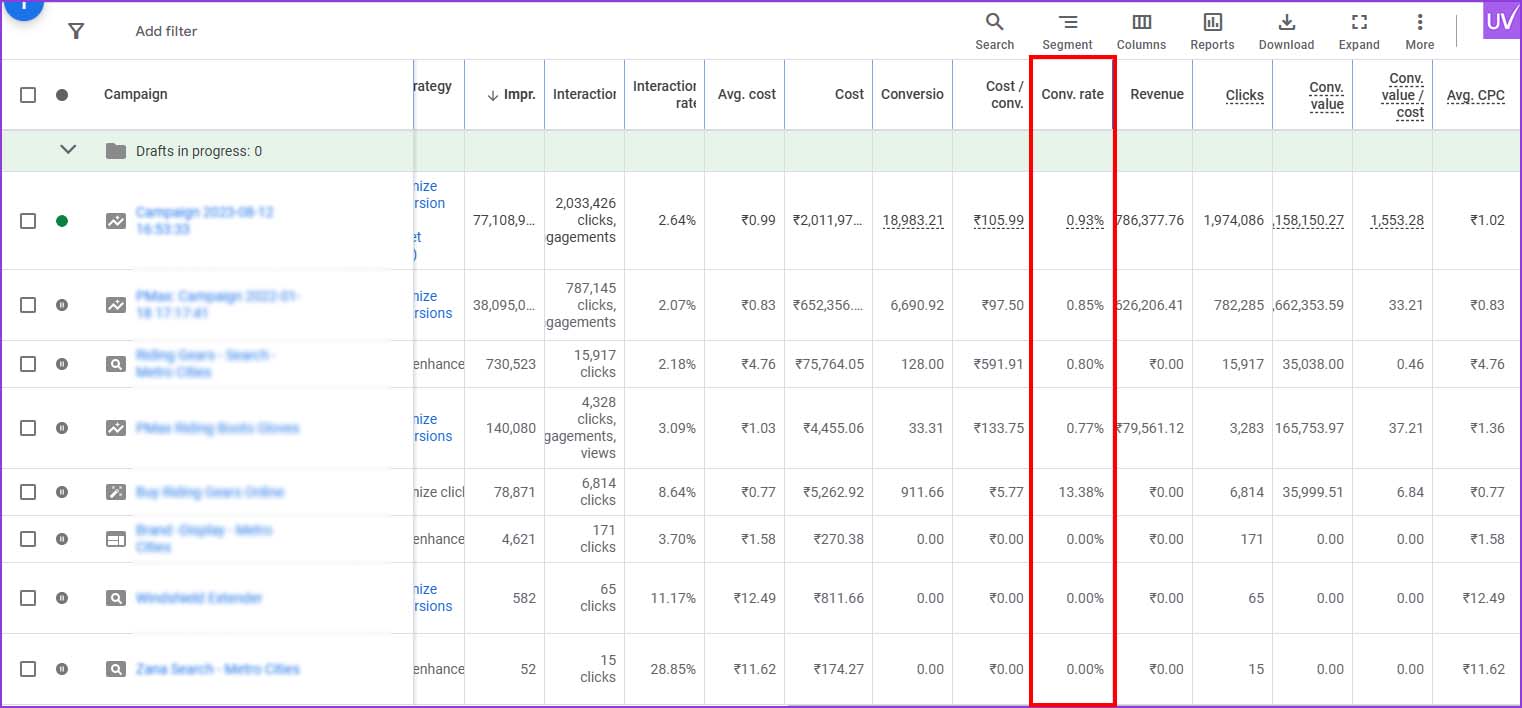
The job of conversion rate is to check whether the people who are clicking on your ads are taking the desired action or not!
You can check it by:
Conversion Rate = % of people who click and then take action.

Why It’s a Gut Check:
If you are noticing tons of clicks on your landing page but the conversion count is zero, it is more like throwing bait in a pool with no fish.
Industry Vibes:
For a fact, 3-5% is considered a decent conversion rate for search campaigns.
Whereas, if you are above 10%, give yourself a good pat on the back because, wow, what a great job. But if it is below 3%, let’s have a chat!
How to Improve It:
- Use a clear and strong CTA (not “Submit”—you’re not a bank).
- Remove unnecessary distractions from your landing page.
- Test short vs. long forms.
8. Cost-Per-Click (CPC): Paying ₹500 for a Click? Why, Though?

CPC is finding what one click costs you, and with it, you can analyze whether your budget will party or perish.
Average CPCs Across Industries:
- Ecommerce: ₹95
- Legal: ₹500+
- Tech: ₹250
Ask Yourself:
Is your click worth the price they are coming from?
And if your answer is no, then there is a high probability that you are bidding on vanity keywords.
Lower Your CPC By:
- Improving Quality Score (yes, again).
- Using long-tail keywords for specific traffic.
- Utilizing AI-based campaigns like Performance Max for optimization and doing the heavy lifting.
9. Click-Through Rate (CTR): Are People Even Clicking Your Ads?

Click-through rate defines whether your ad is even worth clicking on or not.
Maybe you have been seeing a lot of impressions lately, but none of them are turning into clicks.
Well, that’s where CTR comes in handy to find where your ad appeals to the audience or not.
What is the Formula?
CTR = Clicks ÷ Impressions. It measures how appealing your ad is.
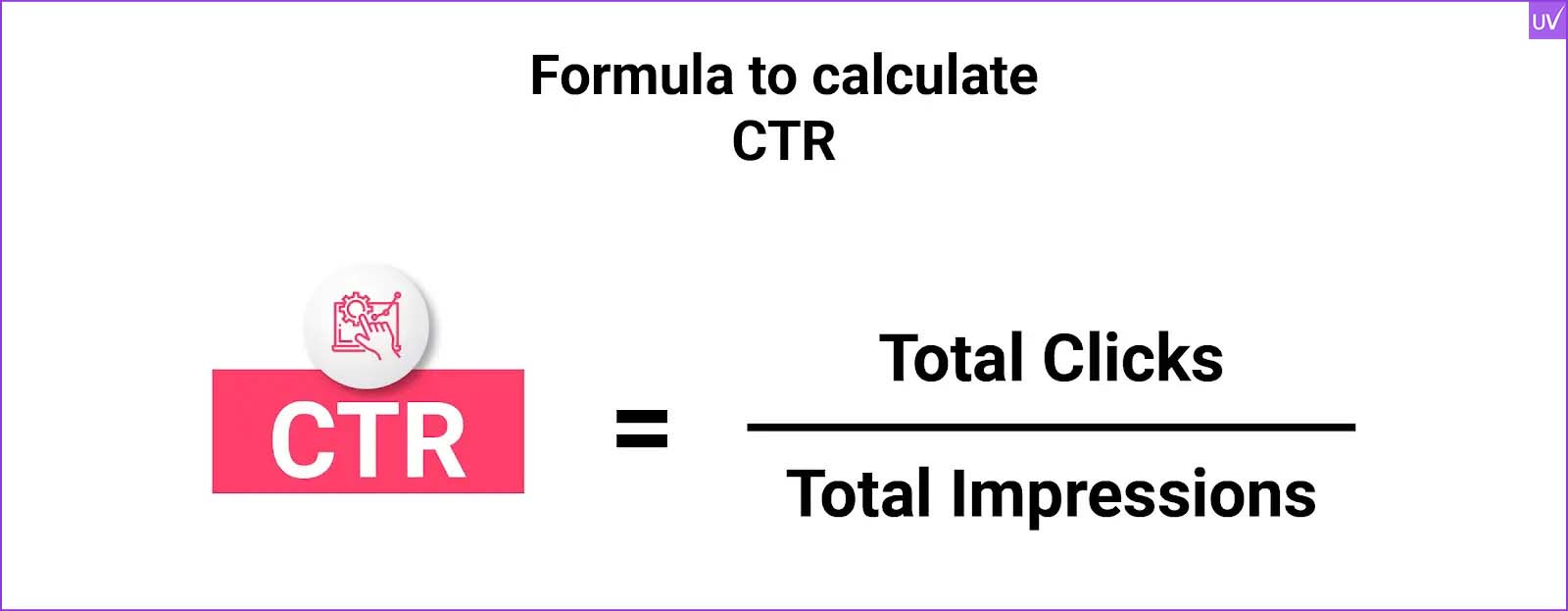
Why It Deserves Your Attention:
No one wants their ads to turn out to be spam. Measuring CTR will help you find how many people are scrolling right past your ad like it’s spam.
Benchmarks to Beat:
- Search Ads: 3.17%
- Display Ads: 0.46%
How to Improve CTR:
- Use emotional, appealing, and attentive language (for example, “60% Off Ends Tonight” > “Great Deal”)
- Add ad extensions ( price snippets, site links, and more)
- Test headlines that can be relatable to need or budget, depending on it
Want more accuracy? A PPC tracker can show CTR trends by keyword and device.
10. Customer Lifetime Value (CLV): Play the Long Game

CLV is essential to estimating how much revenue a customer would bring throughout their journey with your brand.
Why It Matters
Monitoring CLV matters because it helps you understand that not every customer is equal.
Using CLV would help you decide how much you can afford to spend acquiring them.
Formula:
CLV = (Average Purchase Value × Purchase Frequency) × Customer Lifespan
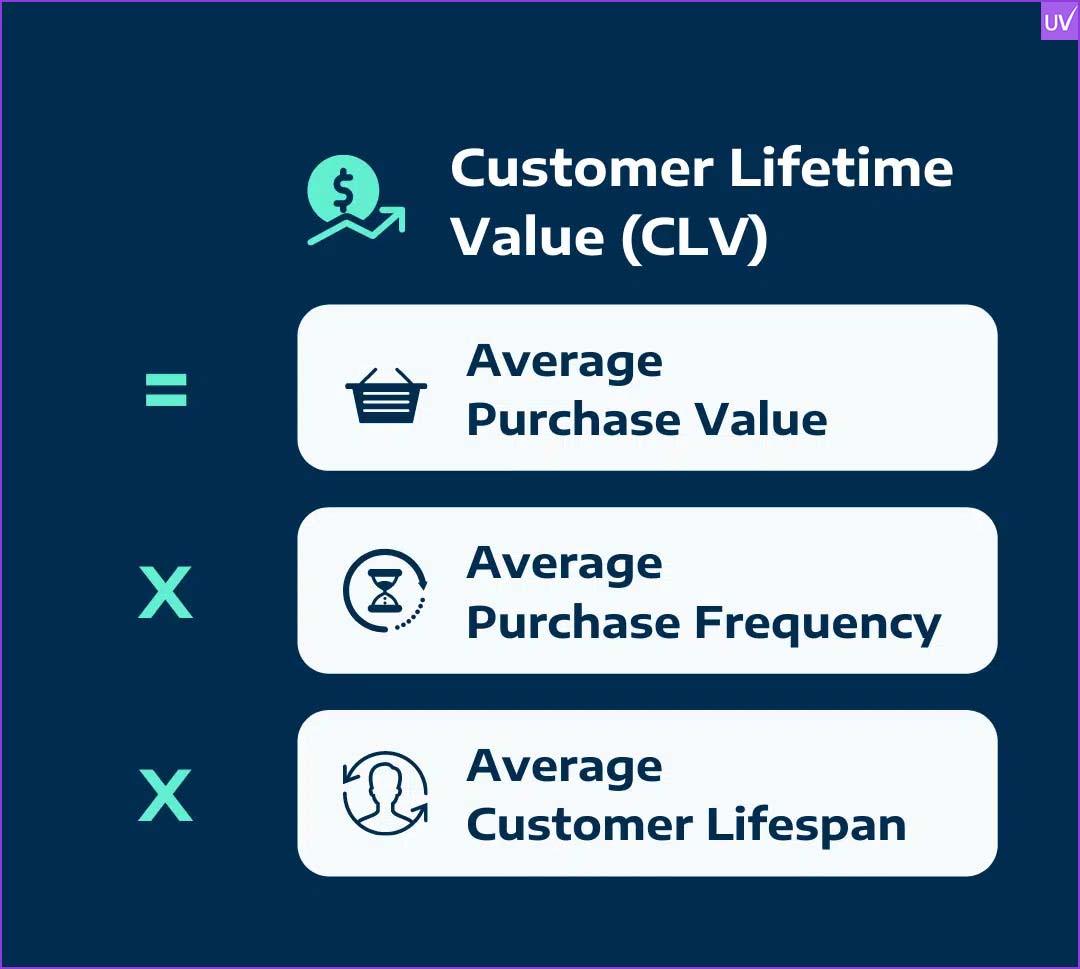
Why It’s Powerful:
- Justify a higher CPA for long-term customers.
- Collaborate best with PPC tracker data to create LTV-based segmentation.
PPC Success = Tracking Smart + Optimizing Smarter
Let’s quickly answer one question: Are you making decisions based on data, or using instincts?
Because instincts don’t pay bills. But smart PPC tracking does.
Here’s a quick cheat sheet to help you stay on track:
| KPI | What It Answers | Danger Sign |
| CPA | Are you overpaying for customers? | CPA > Profit per customer |
| Cost/Conversion | Is every lead worth the spend? | High cost, low lead quality |
| Impression Share | Are you even showing up? | <50% on core keywords |
| Quality Score | Do your ads meet Google’s standards? | Score <6 |
| ROAS | Is your campaign profitable? | ROAS <100% |
| Conversion Rate | Are your clicks converting? | Rate <2% |
| CPC | Is your ad spend efficient? | CPC is too high for low-value keywords |
| CTR | Do your ads grab attention? | <2% on search |
Conclusion: Track What Matters or Watch Your Budget Burn
To conclude this blog, we will say, if you are not using PPC campaign KPIs correctly. There is a high chance you are throwing your money into the garbage, hoping it will give you flowery returns.
Well, digital space has never been friendly, and now it is cutthroat. Every opportunity, such as wasted clicks, every missed impression, and every under-optimized landing page you miss will help your competitor to win.
But to reduce your stress, let me tell you, PPC is not like magic; it requires analysis, and if you do that correctly using these 10 KPIs, there is nothing that can stop you from reacting and optimizing.
If you are finding it all too much but are ready to turn clicks into conversions, then Uvisible can be your right partner as an expert PPC agency.
At Uvisible, we handle the number and let you focus on growth. We are experts in everything from PPC audits to full-scale campaigns.
Let’s grow your ROI – talk to Uvisible today.
About us and this blog
We are a digital marketing company with a focus on helping our customers achieve great results across several key areas.
Request a free quote
We offer professional SEO services that help websites increase their organic search score drastically in order to compete for the highest rankings even when it comes to highly competitive keywords.
Subscribe to our newsletter!
More from our blog
See all postsRecent Posts
- AI-Written Content vs Google’s Search Standards: What SEOs Must Know November 29, 2025
- How to Market Your Reiki Business Online November 25, 2025
- Manipulating AI For Your Brand Benefit: Proven Techniques To Win November 22, 2025

